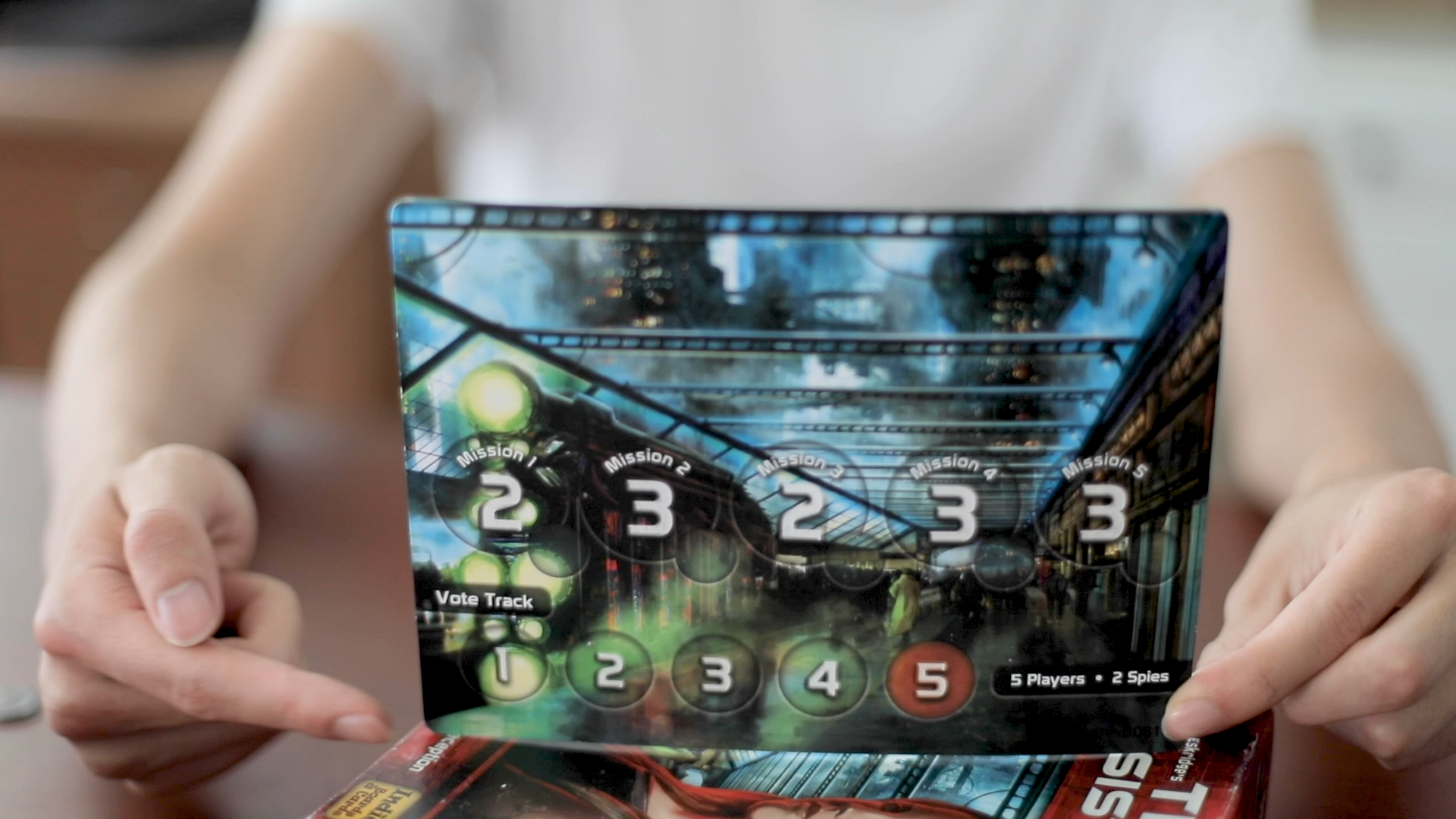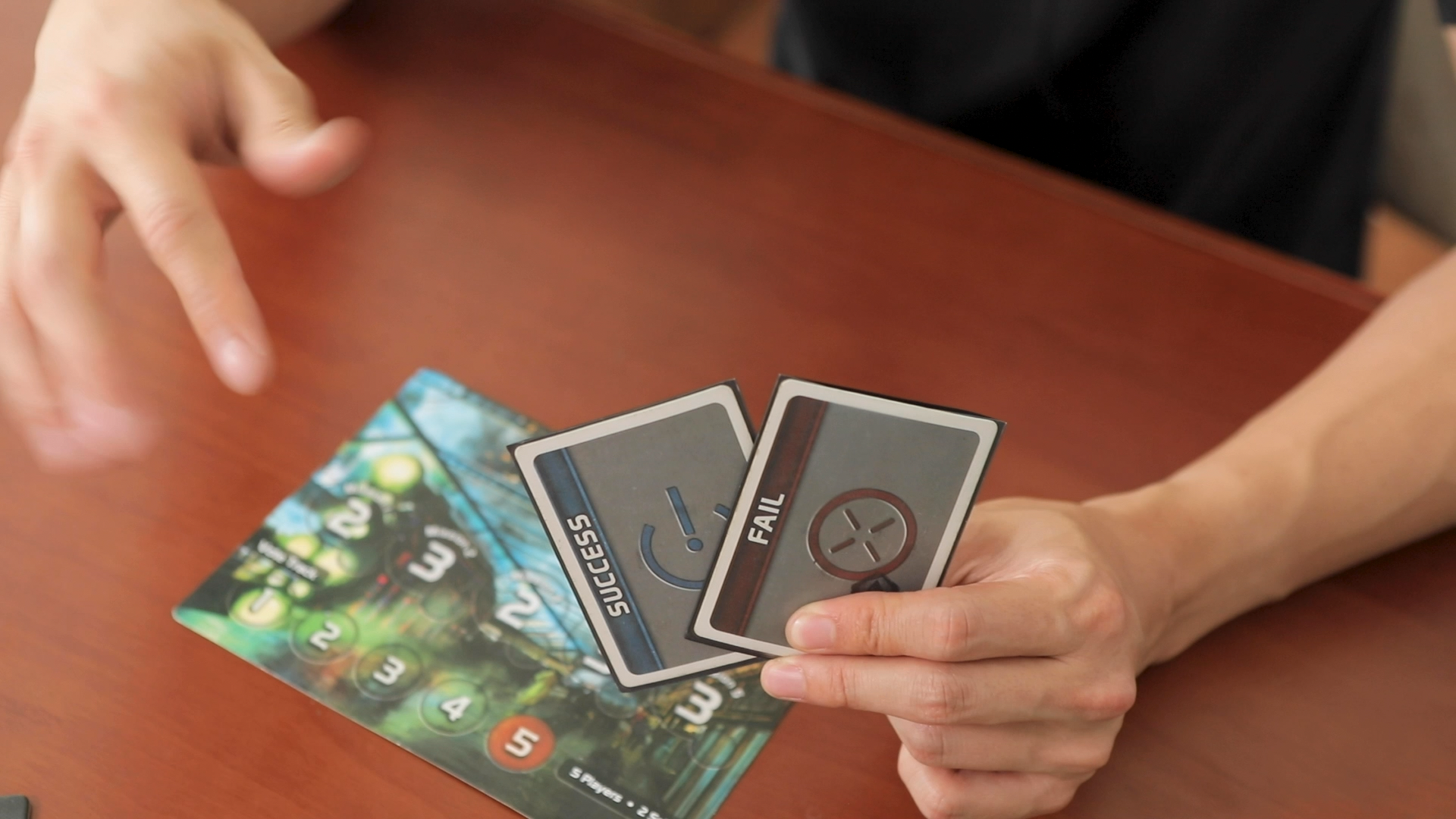The Resistance Review
A golden ticket to bicker with your friends.
5-10 players play in hidden teams like of Werewolf or Mafia in 30-60 minutes. Will the spies be able to secretly fail enough missions?
Video published July 13th, 2019

Be the good guy Resistance, or the bad guy spies.

Go on 5 missions, picking a new team for each.

Pass, or fail the mission. That's it.
Overview & How to Play
For quick social deduction, this is the right place.
The Resistance features two hidden teams: the Resistance, or good guys, versus the Spies, or bad guys. Each team is trying to be the first to have 3 missions swing their way, in a game of a total of 5 potential missions.
At the beginning, identity cards will be secretly dealt out, and the spies will identify each other.
Each round consists of players going on a mission. So the turn player picks a team of people to go on a mission (can pick themselves), then that team can be approved or disapproved by the entire table, via a vote. If the vote disapproves, a new team is picked.
If the vote approves, that team goes on the mission, being given a pair of 2 cards: a pass and a fail. The good guys must put pass. But the bad guys can pick either: fail the mission now to achieve the goal of having a mission immediately swing their way, or they can put down a pass, to pass the mission, thus maintaining their cover. After all, if there is one failure in the stack of mission cards, the whole table will know that one person failed it, and lots of bickering will ensue.
If the game isn’t over after this mission’s result, just go on another mission.
Pros
This game features clear, and bright components. If you’re a Spy, yep, you’ll know with the bright red, sinister looking fellow on the card. The mission boards have vivid colors, tokens feel great, cards last a long time, all fantastic stuff.
Right, so this game just ticks off SO many boxes when it comes to social deduction. There is no elimination whatsoever. It always plays in a neat amount of time due to there being a maximum amount of 5 rounds, unless your group is extremely indecisive. It also has an amazing learning curve, being incredibly easy to pick up.
Replayability is also quite high, as the act of lying and sussing out people’s intentions feels completely different with new groups. Even just one new person at the table transforms dynamics.
The Resistance just excels at having such strong, accessible social deduction moments of people lying to each other. Determining who is the spy can usually be quite straightforward: its gotta be between two players based off of prior information. But the spies can try all types of different tactics of pretending to suspect each other, or not failing missions until the very end. There’s secret footsie taps, eyebrow raises, or hilarious nonsensical arguments. Even if you’re discovered as a spy, you can still influence the game by voting and spreading false information to conceal your spy teammates.
Cons
But as this game is written as for 5-10 players, you really want to be playing with 5 or 6 players. 7-10 players just has so much downtime and imbalance, mostly due to how one single bad vote can botch a mission of any size, like of 4 people. With more players, it’s also incredibly likely that the game ends before some players get to pick teams, or even worse, go on missions themselves.
Fun fact: this is the first review we ever did here at Shelfside! Glad you’re here.









